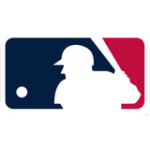
During this magazine mock draft and early best ball season, I’m taking players based on my sense of what the rankings will ultimately be come late August. We’re in July, and ADP for high stakes events like NFFC drafts have set in. I’ve now done all my preseason research and ranked the players I consider relevant before training camp starts later this month.
In many cases, my opinions of players have changed in light of the objective data I use to rank players:
- Overall usage
- Efficiency (including success rates)
- Relative speed
- Expected red zone and goal line opportunities
- Coaching tendencies
- Radar assistance on metrics like contested catches, catches over average and actual YAC vs. expected YAC
When the data changes, I change my mind. I don’t care what I believed yesterday, I only want to be right tomorrow.
I’ve already looked at early-round picks who give me pause, though those weren’t yet filtered through all my rankings research — I’ll revisit those players and have more to say once training camp starts. Today I’m looking at players I like after ADP pick 100 — the later-round bargains. I note positional ADP even though all these guys are going after pick 100 in July NFFC drafts.
Advertisement
I think overall rankings are pointless. As I’ve written previously, if you play in formats that start two WRs and a flex (Flex 9), you have to prioritize RBs; and if you play in formats with three WRs and a flex (Flex 10), you have to prioritize WRs. Across the industry, leagues are nearly evenly split between Flex 9 (BOO!) and Flex 10 (golf clap). So you can’t square this in one set of overall rankings. Positional ADPs are always relevant to all formats. The same goes for SuperFlex formats and positional QB rankings (vs. overall).
Quarterback
Trevor Lawrence (QB19): He’s my QB9. This comes down to whether you believe Travis Hunter was drafted to supercharge the offense. Based on what they paid, the Jaguars must think Hunter is a better prospect than Marvin Harrison Jr., who was WR8 in ADP last year (a value I hated and advised strongly against). With Brian Thomas, Lawrence could have two top 20 fantasy WRs. “But Mike,” you say, “Lawrence is a bust. How can you have him at QB9?” Well, he already was QB7 in our game for a whole year (2022). He can run. He can score rushing TDs. The market seems to be saying Lawrence is not as good as head coach Liam Coen’s 2024 QB, Baker Mayfield (QB5 last year). Come on! Wait as long as you can on Lawrence. But guys with his floor in this year’s very exciting Jacksonville passing environment is why you wait at QB.
Running Back
Jaylen Warren (PIT — RB34): He was good everywhere in 2024, but not great anywhere. My RB27 has a career yards per carry of 4.8 on 346 attempts. His success rate has always been above average (I use yards gained as a percentage of those needed relative to the down, not EPA). He’s earned at least a James Cook-like workload. Like 2023 Cook, Warren hasn’t scored many TDs, especially from the goal line (1-for-3 last year, 2-for-8 for his career). On short yardage for his career, Warren has a 64% conversion rate (average is 71%), so it’s not like he can’t do it. He isn’t small and he worked hard this offseason to keep his No. 1 spot on the depth chart.
Jaylen “Bowling Ball” Warren.
THIS. IS. WHAT. I. AM. TALKING. ABOUT.
Work when NO ONE is watching.
LFG. pic.twitter.com/FnYm8qX45Q
— Jared Kane (@BaddestBearJew) July 3, 2025
Warren is playing his age 27 season with low mileage. He should get a massive uptick in targets with Aaron Rodgers as his QB. He’s a bargain at his ADP. (Note Kaleb Johnson is my RB35.)
Zach Charbonnet (SEA — RB35): My RB26 beat Kenneth Walker in every objective statistical way in 2024 (it was close though, admittedly). Why is Charbonnet being drafted so far behind Walker (RB15)? I know the consensus is Walker is more talented, but if that’s true, shouldn’t the stats show he’s objectively better? I think pass blocking grades for RBs are pretty unstable, but Charbonnet beat Walker there, too. Charbonnet started four games for the often-injured Walker, combining for 75 fantasy points in those contests (18.8 per game). Of course, never draft Charbonnet before Walker … but don’t draft Walker. Try to steal Charbonnet close to his positional ADP.
Advertisement
Wide Receiver
Rashod Bateman (BAL — WR58): My WR37 had nine TDs and got paid for it — three years, $38 million with more than half guaranteed. Bateman had 11.3 yards per target, which is a crazy good number (average for a WR is about 9.0, and teammate Zay Flowers was about average). Flowers outsnapped Bateman, but only by a small margin (91% to 84%). Bateman received 13% of the targets in the red zone to Flowers’ 11%. But Bateman converted five of those eight targets compared three of seven for Flowers. This is like Charbonnet vs. Walker. Why is Bateman currently WR58 and Flowers WR27? How is Flowers so much better? Based on what?
Quentin Johnston (LAC — WR64): He’s my WR43. Johnston is a touchdown maker — four of his 11 targets in the red zone were touchdowns, including both of his targets inside the 10. Johnston averaged under 8.0 per target, which is bad. And he dropped 7.7% of his targets (average for a WR is 4.7%). Drops are not predictive, but there was a lot of noise with Johnston’s foibles since one drop famously cost the Chargers a game. He’s undoubtedly big and fast, with a top radar speed of nearly 21 mph (67th percentile). So he can use his 6-foot-4 height in close and, theoretically, score from a distance. I have no confidence Mike Williams, who returned to the Chargers, will supplant Johnston, who has draft capital, elite traits and also had a mild breakout last year despite a Week 6 ankle injury that sidelined him for the next two games. His July ADP is stupidly low. But obviously I want you to pay market prices.
Tight End
Tucker Kraft (GB — TE12): I’m very bullish on Kraft, who’s my TE7. He has excellent speed (88th percentile at the position, according to the radar), is great at yards after the catch (No. 1 in YAC over expected per catch at 2.7 yards, also according to NGS) and excellent in the red zone (21% of team targets there, converting 6 of 11). But the Packers are 24th in rate of targets to TEs, about four points below average. Why? Their WRs aren’t great. This seems to be a major inefficiency. If the Packers wise up, Kraft could be a league winner relative to cost at his position. No Green Bay receiver since Davante Adams has had 100 targets (hat tip: Yahoo’s Scott Pianowski). Kraft deserves that kind of market share at a minimum — admittedly, he’s probably not going to get it.
(Photo of Trevor Lawrence: Mike Carlson / Getty Images)
This news was originally published on this post .





Be the first to leave a comment